|
Books Should Be Free Loyal Books Free Public Domain Audiobooks & eBook Downloads |
|
|
Books Should Be Free Loyal Books Free Public Domain Audiobooks & eBook Downloads |
|
Non-fiction |
|---|
|
Book type:
Sort by:
View by:
|
By: Mark Twain | |
|---|---|
 Anti-imperialist writings
Anti-imperialist writings
This audiobook is a collection of Mark Twain's anti-imperialist writings (newspaper articles, interviews, speeches, letters, essays and pamphlets). | |
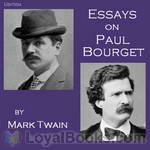 Essays on Paul Bourget
Essays on Paul Bourget
Collection of short essays concerning French novelist and critic Paul Bourget. Included: "What Paul Bourget Thinks of Us" and "A Little Note to M. Paul Bourget". | |
 Mark Twain’s Journal Writings, Volume 2
Mark Twain’s Journal Writings, Volume 2
This second collection of essays by Mark Twain is a good example of the diversity of subject matter about which he wrote. As with the essays in Volume 1, many first appeared alone, in magazines or newspapers, before being printed as chapters of his larger works, while others were taken from larger works and reprinted in collections of essays. On top of being prolific, Mark Twain was a very successful marketer of his works. Volume 2 contains the following works: 1.) "A Curious Experience" - 1892 2... | |
 Mark Twain’s Journal Writings, Volume 3
Mark Twain’s Journal Writings, Volume 3
This third volume of Mark Twain's journal writings continues on eclectic and varied path established by the first two volumes. Included in this collection are works that appeared by themselves in magazines during Twain's lifetime, as well as essays taken by editors and Twain himself from Twain's larger works, and re-published in collections of his stories. This volume includes the following works: "Buying Gloves in Gibraltar", "The great revolution in Pitcairn", "A Gift from India" [including editor's... | |
By: Martha Finley (1828-1909) | |
|---|---|
 Mildred Keith
Mildred Keith
Mildred Keith has a good life in Lansdale, Ohio - family, friends and school keep her happy and busy. But when her parents announce they're all moving to Indiana, Mildred's faith is tested beyond anything she could have imagined. Through good times and bad, follow Mildred and her family as they learn to rely on the Lord for strength in every circumstance! This project was proof-listened by Adele de Pignerolles and Linette Geisel. - Summary by Rachel | |
 Mildred and Elsie
Mildred and Elsie
Mildred returns home from visiting her mother's relatives. She continues to grow in wisdom and beauty and receives many proposals of marriage. She is an ever-increasing blessing to her family and community. In-laws are added to the family, and they enjoy a visit from Horace Dinsmore and his daughter Elsie. - Summary by Amy | |
 Mildred's Married Life
Mildred's Married Life
Mildred and Charlie Landreth begin married life together and enjoy many simple home pleasures. Together with Mildred's younger sister, they journey South to visit friends and relatives. - Summary by Amy | |
 Mildred at Home: With Something About Her Relatives and Friends
Mildred at Home: With Something About Her Relatives and Friends
Book 5 of the story of Mildred Keith by Martha Finley. We join Mildred as she settles into home life as wife and mother. We also see the rest of the Keith children begin to make starts of their own - some near to home, and others far away and perhaps lost forever. The Dinsmore cousins continue to be part of the story as well. - Summary by Michelle Hannah | |
By: Martha McCulloch-Williams (1857?-) | |
|---|---|
 Dishes & Beverages of the Old South
Dishes & Beverages of the Old South
| |
By: Martha Summerhayes (1844-1911) | |
|---|---|
 Vanished Arizona: Recollections of the Army Life of a New England Woman
Vanished Arizona: Recollections of the Army Life of a New England Woman
This is the lively autobiography of Martha Summerhayes, the wife of an officer in the American Army. Here, she tells many stories about life and conditions in different camps and forts in which she lived with her expanding family, people along the way, and Journeys. | |
By: Martin Luther (1483-1546) | |
|---|---|
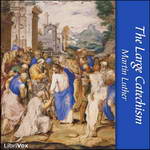 The Large Catechism
The Large Catechism
Luther’s Large Catechism consisted of works written by Martin Luther and compiled Christian canonical texts, published in April of 1529. This book was addressed particularly to clergymen to aid them in teaching their congregations. Luther’s Large Catechism is divided into five parts: The Ten Commandments, The Apostles’ Creed, The Lord’s Prayer, Holy Baptism, and The Sacrament of the Altar. It and related documents was published in The Book of Concord in 1580. | |
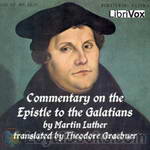 Commentary on St. Paul's Epistle to the Galatians
Commentary on St. Paul's Epistle to the Galatians
Martin Luther strove to give a verse by verse exegesis of the Epistle to the Galatians in the work. The original work, written in Latin in around 1516, was much longer. This translation by Theodore Graebner (1876-1950) strove to produce a copy of the work in a format and with wording much more applicable to the general English-speaking American public. | |
 The Small Catechism
The Small Catechism
Luther's Small Catechism (Der Kleine Katechismus) was written by Martin Luther and published in 1529 for the training of children. Luther's Small Catechism reviews The Ten Commandments, The Apostles' Creed, The Lord's Prayer, The Sacrament of Holy Baptism, The Office of the Keys & Confession, and The Sacrament of the Eucharist. It is included in the Lutheran Book of Concord as an authoritative statement of what Lutherans believe. The Small Catechism is widely used today in Lutheran churches as part of youth education and Confirmation. | |
 The Smalcald Articles
The Smalcald Articles
MANUAL OF SURGERY, OXFORD MEDICAL PUBLICATIONSBY ALEXIS THOMSON, F.R.C.S.Ed.PREFACE TO SIXTH EDITION Much has happened since this Manual was last revised, and many surgical lessons have been learned in the hard school of war. Some may yet have to be unlearned, and others have but little bearing on the problems presented to the civilian surgeon. Save in its broadest principles, the surgery of warfare is a thing apart from the general surgery of civil life, and the exhaustive literature now available on every aspect of it makes it unnecessary that it should receive detailed consideration in a manual for students... | |
 The Bondage of the Will
The Bondage of the Will
On the Bondage of the Will (Latin: 'De Servo Arbitrio', literally, "On Un-free Will", or "Concerning Bound Choice"), by Martin Luther, was published in December 1525. It was his reply to Desiderius Erasmus's De libero arbitrio diatribe sive collatio or On Free Will, which had appeared in September 1524 as Erasmus's first public attack on Luther, after being wary about the methods of the reformer for many years. At issue was whether human beings, after the Fall of Man, are free to choose good or evil. The debate between Luther and Erasmus is one of the earliest of the Reformation over the issue of free will and predestination. | |
 Concerning Christian Liberty
Concerning Christian Liberty
Early in the course of the Reformation (1520) Martin Luther penned a trilogy of foundational documents addressing the Church, the Nobility and the Christian life. This document concerning the Christian life expounds the famous paradox: "A Christian man is the most free lord of all, and subject to none; a Christian man is the most dutiful servant of all, and subject to every one." | |
 To the Christian Nobility of the German Nation
To the Christian Nobility of the German Nation
Early in the course of the Reformation (1520) Martin Luther penned a trilogy of foundational documents addressing the German Nobility, the Church and the Christian. "To the Christian Nobility" appeared first. In it, Luther identifies and attacks the three walls with which the papacy insulates itself from reformation. Next, he discusses three areas that need to be addressed by a council. Finally, he offers 27 articles respecting reforms needed in Christendom. | |
 On the Babylonian Captivity of the Church
On the Babylonian Captivity of the Church
Early in the course of the Reformation (1520) Martin Luther penned a trilogy of foundational documents addressing the German Nobility, the Church and the Christian. "On the Babylonian Captivity of the Church" appeared second. In it, Luther sifts the wheat from the chaff as regards the seven sacraments of the Roman Church. | |
By: Mary A. Hamilton | |
|---|---|
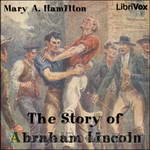 The Story of Abraham Lincoln
The Story of Abraham Lincoln
In this biography for young adults, Mary A. Hamilton gives a British person’s perspective on the 16th President of the United States. A glowing tribute to “Honest Abe”, the author traces Lincoln’s ancestral roots and recounts his birth in Kentucky, his youth in Indiana, his adult life in Illinois and his years in the White House. She also provides a good background on the causes and course of the American Civil War. Hamilton is not always historically precise. For example, she erroneously names Jefferson Davis as the Southern Democratic candidate for president running against Lincoln and Douglas in 1860 rather than John C... | |
By: Mary A. Wilson | |
|---|---|
 Mrs. Wilson's Cook Book Numerous New Recipes Based on Present Economic Conditions
Mrs. Wilson's Cook Book Numerous New Recipes Based on Present Economic Conditions
| |
By: Mary Antin | |
|---|---|
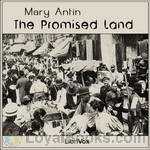 The Promised Land
The Promised Land
Being a Jew in Russia at the end of the 19th century was not easy at all. Jews were persecuted because of their religion. So the Jews found comfort in their ancient traditions. When Mary Antin’s father decided that keeping to his traditions did not suit him anymore, he found no place in Russia. So he emigrated to America with his family. Life was not easy, though as a child, Mary describes life in Boston as almost perfect. A smart and dignified girl, Mary takes the good things in anything and writes her autobiography with a smile. | |
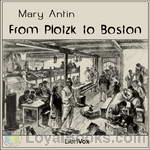 From Plotzk to Boston
From Plotzk to Boston
An intensely personal account of the immigration experience as related by a young Jewish girl from Plotzk (a town in the government of Vitebsk, Russia). Mary Antin, with her mother, sisters, and brother, set out from Plotzk in 1894 to join their father, who had journeyed to the “Promised Land” of America three years before. Fourth class railroad cars packed to suffocation, corrupt crossing guards, luggage and persons crudely “disinfected” by German officials who feared the cholera, locked “quarantine” portside, and, finally, the steamer voyage and a famiily reunited... | |
By: Mary Baker Eddy (1821-1910) | |
|---|---|
 The People's Idea of God
The People's Idea of God
“The improved theory and practice of religion and of medicine are mainly due to the people’s improved views of the Supreme Being.” (from The People’s Idea of God) | |
By: Mary Chesnut | |
|---|---|
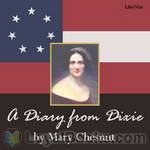 A Diary from Dixie
A Diary from Dixie
Mary Boykin Miller Chesnut, a well-educated South Carolina woman who was the wife of a Confederate general, kept extensive journals during the Civil War. Mrs. Chesnut moved in elite circles of Southern society and had a keen interest in politics. Her diary is both an important historic document and, due to her sharp wit and often irreverent attitude, a fascinating window into Southern society of the time. This recording is of the first published edition of the diary, compiled from Mrs. Chesnut's revisions of her original journals. | |
By: Mary Eales | |
|---|---|
 Mrs. Mary Eales's receipts. (1733)
Mrs. Mary Eales's receipts. (1733)
| |
By: Mary Eaton (fl. 1823-1849) | |
|---|---|
 The Cook and Housekeeper's Complete and Universal Dictionary; Including a System of Modern Cookery, in all Its Various Branches, Adapted to the Use of Private Families
The Cook and Housekeeper's Complete and Universal Dictionary; Including a System of Modern Cookery, in all Its Various Branches, Adapted to the Use of Private Families
| |
By: Mary Edwards Walker (1832-1919) | |
|---|---|
 Unmasked, or the Science of Immorality. To Gentlemen
Unmasked, or the Science of Immorality. To Gentlemen
Mary Edwards Walker was a physician and surgeon who served in the Civil War. An abolitionist, prohibitionist, and cross-dressing leader of the women's dress reform movement, she published this lively sex manual in 1878. It is a curious blend of useful information and Victorian sexual mythology, at once puritanical and explicit. | |
By: Mary Elizabeth Braddon (1835-1915) | |
|---|---|
 Christmas Hirelings
Christmas Hirelings
It is the Christmas season once again and things are, well, boring for the adults at Penlyon Castle. "...if somehow or other I had a pack of children belonging to me, I would keep Christmas with the best — keep it as it ought to be kept." says Sir John. His good friend Mr. Danby has the perfect solution - to hire some children to spend Christmas! Thus, the arrival of Lassie, Laddie, and little Moppet - Christmas and Sir John may never be the same again. Proof Listener - hallejk | |
 Eleanor's Victory
Eleanor's Victory
Only 15-years-old, Eleanor Vane is very happy with her lot: educated in an expensive finishing school in Paris, the apple of her father's eye, and disposed to be kind. Of course there are things missing: she does not remember her mother who died when she was young. But at least she has her father... Until he unexpectedly dies. Now Eleanor is at the mercy of her half-siblings who were never in touch with her, and the rest of the world who would consider her an orphaned beggar. Sent to work as a lady's companion to an old friend of her late father's, Eleanor might, just might, be able to win a respectable place in society... | |
 Sons of Fire
Sons of Fire
"He was a stranger in Matcham, a 'foreigner' as the villagers called such alien visitors. He had never been in the village before, knew nothing of its inhabitants or its surroundings, its customs, ways, local prejudices, produce, trade, scandals, hates, loves, subserviencies, gods, or devils , and yet henceforward he was to be closely allied with Matcham, for a certain bachelor uncle had lately died and left him a small estate within a mile of the village." | |
 Aurora Floyd Volume 2
Aurora Floyd Volume 2
Aurora Floyd is the spoiled, impetuous, but kind hearted daughter of Archibald Floyd, a wealthy banker and his wife, an actress who died shortly after Aurora's birth. As a teenager she is sent away to finishing school in Paris. This is volume two of the story which tells of Aurora's life with her husband John Mellish. This is a story of love, murder and the search for justice. - Summary by Michele Eaton | |
By: Mary Emily Donelson Wilcox (1829-1905) | |
|---|---|
 Christmas Under Three Flags
Christmas Under Three Flags
This work details personal memories of Mary Emily Donelson Wilcox, adopted granddaughter of Rachel Donelson Jackson, wife of President Andrew Jackson, and assumed to be the first baby born in the White House. The book focuses on three Christmas memories--the first of a Christmas in the White House during the 1830's and Jackson's Presidency; the second, a Christmas in Prussia at the home of the Crown Prince, to which she was invited because her father was US minister to Berlin; the last story, a Christmas in Texas in the 1830s... | |
By: Mary Everest Boole (1832-1916) | |
|---|---|
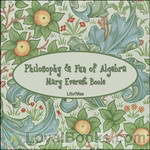 Philosophy and Fun of Algebra
Philosophy and Fun of Algebra
Mary Everest Boole (1832-1916) was born Mary Everest in England and spent her early years in France. She married mathematician George Boole. She was the author of several works on teaching and teaching mathematics in particular. This short book, Philosophy and Fun of Algebra, is meant to be read by children and introduces algebra and logic. She uses the word “algebra” broadly, defining it as a “method of solving problems by honest confession of one’s ignorance”. Using this definition, Boole introduces, in a conversational manner, the concepts of logic and algebra, illustrating these concepts with stories and anecdotes, often from biblical sources... | |
By: Mary Finley Leonard (1862-1948) | |
|---|---|
 Candle and the Cat
Candle and the Cat
"To the memory of TROLLEY, This little story is dedicated." When young Caro goes to stay with her Aunt and Grandfather, the seminary president, she learns to not be afraid of the dark and to "be a candle" by "sharing her light" with the help of Trolley the cat. In doing so, she is able to help others, including a reclusive invalid, renew their old friendships. - Summary by JHedrick | |
By: Mary H. Kingsley | |
|---|---|
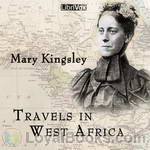 Travels in West Africa
Travels in West Africa
Mary Henrietta Kingsley (13 October 1862 – 3 June 1900) was an British explorer and writer who greatly influenced European ideas about Africa and its people. Kingsley was an outspoken critic of European colonialism, a champion for indigenous customs, and a dedicated campaigner for a revised British policy which supported traders and merchants over the needs of settlers and missionaries. Her adventures were extraordinary and fascinating. Among other things she fought with crocodiles, fell into native spear traps and was caught in a tornado on the slopes of Mount Cameroon... | |
By: Mary H. Northend (1850-1926) | |
|---|---|
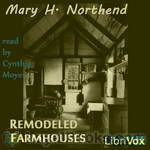 Remodeled Farmhouses
Remodeled Farmhouses
"There is a certain fascination connected with the remodeling of a farmhouse. Its low, raftered interior, its weather-beaten exterior, never fail to appeal. Types vary with the period in which they were built, but all are of interest. In this collection, which has been pictured with great care, pains have been taken to show as many different types as possible, so that the student will be able to find numerous interesting details that can be incorporated into his contemplated remodeling." [opening lines of Preface] | |
By: Mary Harris Jones (1830 or 1837-1930) | |
|---|---|
 The Autobiography of Mother Jones
The Autobiography of Mother Jones
Mother Jones (Mary Harris Jones) was a legendary labor organizer. She was a founding member of the International Workers of the World (the IWW, or the Wobblies), and was active in the United Mine Workers and the Socialist Party of America. | |
By: Mary Harrison | |
|---|---|
 The Skilful Cook A Practical Manual of Modern Experience
The Skilful Cook A Practical Manual of Modern Experience
| |
By: Mary Hooper (1829-1904) | |
|---|---|
 Nelson's Home Comforts Thirteenth Edition
Nelson's Home Comforts Thirteenth Edition
| |
By: Mary Huestis Pengilly | |
|---|---|
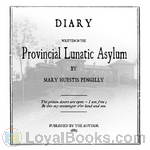 Diary Written in the Provincial Lunatic Asylum
Diary Written in the Provincial Lunatic Asylum
Mary Pengilly was taken to a Lunatic Asylum by her sons where she kept a diary, which this book is taken from. Mary records the harsh conditions and treatments received at the hands of the nurses during her stay. Once Mary is released she takes it upon herself to make the authorities aware of the situation at the Provincial Lunatic Asylum. | |
By: Mary Hunter Austin (1868-1934) | |
|---|---|
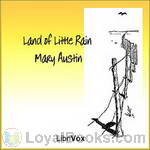 The Land of Little Rain
The Land of Little Rain
The Land of Little Rain is a book of sketches which portray the high desert country of southern California, where the Sierras descend into the Mojave Desert. Mary Austin finds beauty in the harsh landscape: "This is the sense of the desert hills--that there is room enough and time enough. . . The treeless spaces uncramp the soul." Her story begins with the water trails that lead toward the few life giving springs--the way marked for men by ancient Indian pictographs. Life and death play out at these springs... | |
By: Mary Johnson Bailey Lincoln | |
|---|---|
 Carving and Serving
Carving and Serving
| |
By: Mary Johnston (1870-1936) | |
|---|---|
 Chronicles of America Volume 05 - Pioneers of the Old South
Chronicles of America Volume 05 - Pioneers of the Old South
In this remarkably detailed and sweeping fifth installment, Mary Johnston takes us from discoveries and settlements to the evolution into the first colonies, specifically Virginia, Maryland, North and South Carolina, and finally Georgia. Group: Chronicles of America Series | |
By: Mary Kennedy Core | |
|---|---|
 The Khaki Kook Book
The Khaki Kook Book
We cannot ignore the fact that we must eat, and that much as we dislike to acknowledge it, we are compelled to think a great deal about filling our stomachs. This is especially true these days, when prices have soared and soared and taken along with them, far out of the reach of many of us, certain articles of food which we heretofore have always felt were quite necessary to us. About ten years ago the idea of writing a little cook book had its birth. We were in Almora that summer. Almora is a station far up in the Himalayas, a clean little bazaar nestles at the foot of enclosing mountains... | |
By: Mary MacLane (1881-1929) | |
|---|---|
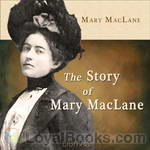 The Story of Mary MacLane
The Story of Mary MacLane
At the age of 19 in 1902, MacLane published her first book, The Story of Mary MacLane. It sold 100,000 copies in the first month and was popular among young girls, but was strongly criticized by conservative readers, and lightly ridiculed by H. L. Mencken. She had always chafed at living in Butte, which was a small mining town, and used the money from sales of this book to move to Greenwich Village where she continued to write books and newspaper articles. Some critics have suggested that even by today’s standards, MacLane’s writing is raw, honest, unflinching, self-aware, sensual and extreme... | |
By: Mary Randolph | |
|---|---|
 The Virginia Housewife
The Virginia Housewife
| |
By: Mary Rhodes Waring Henagan | |
|---|---|
 Two Diaries From Middle St. John's, Berkeley, South Carolina, February - May, 1865
Two Diaries From Middle St. John's, Berkeley, South Carolina, February - May, 1865
Two diaries from Middle St. John’s, Berkeley, South Carolina, February – May, 1865. Journals kept by Miss Susan R. Jervey and Miss Charlotte St. Julien Ravenel, at Northampton and Poooshee Plantations, and reminiscences of Mrs. Henagan. With two contemporary reports from Federal officials. Published by the St. John’s Hunting Club, Middle St. Johns, Berkeley, South Carolina, 1921. - Summary by Book title and david wales | |
By: Mary Roberts Rinehart (1876-1958) | |
|---|---|
 Through Glacier Park
Through Glacier Park
This is about a three-hundred mile trip across the Rocky Mountains on horseback with Howard Eaton. It is about fishing, and cool nights around a camp-fire, and long days on the trail. It is about a party of all sorts, from everywhere, of men and women, old and young, experienced folk and novices, who had yielded to a desire to belong to the sportsmen of the road. And it is by way of being advice also. Your true convert must always preach. (Introduction by Mary Roberts Rinehart quoted from the text.) | |
By: Mary Rowlandson (c.1637-1711) | |
|---|---|
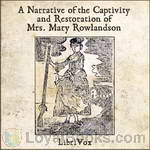 A Narrative of the Captivity and Restoration of Mrs. Mary Rowlandson
A Narrative of the Captivity and Restoration of Mrs. Mary Rowlandson
This is the story of Mary Rowlandson’s capture by American Indians in 1675. It is a blunt, frightening, and detailed work with several moments of off-color humor. Mary, the wife of a minister, was captured by Natives during King Philips War while living in a Lancaster town, most of which was decimated, and the people murdered. See through her eyes, which depict Indians as the instruments of Satan. Her accounts were a best-seller of the era, and a seminal work, being one of the first captivity narratives ever published by a woman... | |
By: Mary Schenck Woolman (1860-) | |
|---|---|
 The Making of a Trade School
The Making of a Trade School
| |
By: Mary Stoyell Stimpson | |
|---|---|
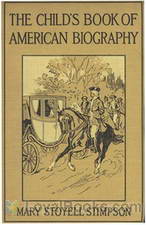 The Child's Book of American Biography
The Child's Book of American Biography
In every country there have been certain men and women whose busy lives have made the world better or wiser. The names of such are heard so often that every child should know a few facts about them. It is hoped the very short stories told here may make boys and girls eager to learn more about these famous people. (from the Forward of the text) | |
By: Mary Swartz Rose (1874-1941) | |
|---|---|
 Everyday Foods in War Time
Everyday Foods in War Time
| |
By: Mary Wollstonecraft (1759-1797) | |
|---|---|
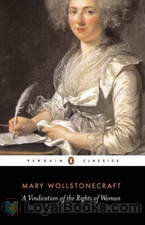 A Vindication of the Rights of Woman
A Vindication of the Rights of Woman
Regarded as the one of the earliest examples of feminist philosophy, A Vindication of the Rights of Woman is written as a direct response to Charles Maurice de Talleyrand-Périgord, a French politician who delivered a report to the French National Assembly suggesting that women should only receive domestic education and additionally encourages women to stay clear of political affairs. In her treatise, Wollstonecraft avidly criticizes this inadequate perception of women as an inferior sex and attacks social inequality, while also arguing for women’s rights in the hope of redefining their position both in society and in marriage... | |
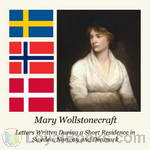 Letters Written During a Short Residence in Sweden, Norway and Denmark
Letters Written During a Short Residence in Sweden, Norway and Denmark
Published in 1796, Letters Written During a Short Residence in Sweden, Norway, and Denmark is a personal travel narrative by the eighteenth-century British feminist writer Mary Wollstonecraft. The twenty-five letters cover a wide range of topics, from sociological reflections on Scandinavia and its peoples to philosophical questions regarding identity. Published by Wollstonecraft's career-long publisher, Joseph Johnson, it was the last work issued during her lifetime. Wollstonecraft undertook her tour of Sweden, Norway, and Denmark in order to retrieve a stolen treasure ship for her lover, Gilbert Imlay... | |
 Original Stories from Real Life
Original Stories from Real Life
Mary Wollstonecraft was one of the early promoters of gender equality long before other crusaders took up the cause. She is perhaps best known for her books, “A Vindication of the Rights of Women” and “A Vindication of the Rights of Men” . But she also wrote widely on education and used fiction formats to promote her progressive views. This book using the genre of didactic children’s stories, was written the same year as her “Mary: A Fiction” 1788, but was first published anonymously... | |
By: Mary Wollstonecraft Shelley (1797-1851) | |
|---|---|
 Lodore
Lodore
The author of Frankenstein returns with her take on an Austen novel. The mother is proud, the father has many vices, yet the aristocratic name must be kept. Even more so when lord Lodore dies. His wife and daughter find themselves without protection. This novel is conserned with gender equality, education and social justice. - Summary by Stav Nisser. | |
By: Matthew Luckiesh (1883-1967) | |
|---|---|
 Artificial Light Its Influence upon Civilization
Artificial Light Its Influence upon Civilization
| |
By: Maurice Maeterlinck (1862-1949) | |
|---|---|
 The children's Life of the Bee
The children's Life of the Bee
Buzz, buzz, buzz. A fascinating and beautifully written explanation of the life of the honey bee. Is the queen the master of the hive or just a hard working servant? What is the purpose of the drones? Why do bees make honey? Do bees ever sleep? Why do bees swarm? Maeterlinck, who won the Noble Prize for Literature, wrote a more scholarly work called The Life of the Bee but then rewrote it in simpler terms so that children could appreciate what goes in a hive. The book describes in simple language the inner workings of a hive from its beginning with a swarm to the fully functional hive with thousands of workers, drones and a queen busily building, repairing and gathering. | |
By: Max Stirner (1806-1856) | |
|---|---|
 The Ego and His Own
The Ego and His Own
In this book, his most famous, Max Stirner presents a philosophical case for a radical egoism that shuns the socially-oriented outlooks of both "establishment" ideologies and of revolutionaries in favor of an extreme individualism. The book is most widely talked about today only through the lens of other philosophers' thought: Karl Marx and Friedrich Engels launched a famous assault on it in The German Ideology, and some draw a connection between Stirner's thoughts here and Nietzsche's egoism a generation later. But it is worth reading in its own right, as much for its lyricism as the challenge of its philosophical proposals. | |
By: May Ayres | |
|---|---|
 Health Work in the Public Schools
Health Work in the Public Schools
| |
By: May Gillington Byron (-1936) | |
|---|---|
 Days with the Great Composers
Days with the Great Composers
These light entertainments, originally published anonymously, are an imagined day in the life of each composer (Beethoven, Mendelssohn, Schubert, Chopin, Wagner, Gounod, Mozart, Schumann, Tschaikovsky). This gives the author scope to describe each one's work and life, sketchily, of course, but interestingly. | |
By: May Kellogg Sullivan | |
|---|---|
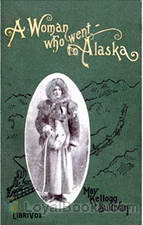 A Woman Who Went to Alaska
A Woman Who Went to Alaska
Alaska has only been a state since 1959, and the breathtaking terrain remains mostly unspoiled and natural. In modern times, many of us have had the pleasure of visiting Alaska via a luxurious cruise ship, where we enjoyed gourmet meals, amazing entertainment, and a climate-controlled environment. It's easy to also book a land package that enables you to see more of the country by train.Imagine what it was like to visit the same wild, untamed countryside in 1899. Instead of boarding a sleek, stylish cruise ship, you travel for weeks on a steamer... | |
By: May Sinclair (1863-1946) | |
|---|---|
 Defence of Idealism
Defence of Idealism
The philosophy of Idealism, revived in eighteenth-century Europe by George Berkeley, argued against philosophical materialism by maintaining that Reality is a creation of the Mind. Despite its flourishing under the leadership of Hegel, Fichte, Schopenhauer, and Schelling, Idealism had definitely fallen into decline late in the nineteenth century and early in the twentieth. May Sinclair, the writer of many popular but philosophically provocative novels and part-time World War I ambulance corps-person, was an unlikely one to take up the torch of the old school and try to revive it yet again for the twentieth century... | |
By: Melvin Powers (author still living) | |
|---|---|
 A Practical Guide to Self-Hypnosis
A Practical Guide to Self-Hypnosis
Published in 1961, A Practical Guide to Self-Hypnosis by Melvin Powers is a self help book that aims to bring the basic techniques of hypnosis to the ordinary reader and harness its legendary powers to one's own advantage. In fact, all forms of hypnosis are essentially self-hypnosis since the process does not work without the overt or covert cooperation of the person who is being hypnotized. The main difference is that all other forms of hypnosis require the guidance of a therapist or hypnotist while the one suggested here is a self-guided procedure... | |
By: Meredith Nicholson (1866-1947) | |
|---|---|
 Broken Barriers
Broken Barriers
Life abruptly changes for young socialite, Grace Durland., when her father goes bankrupt and she is forced to earn a living. Thrust into a new life, she meets -- and falls in love with -- a married man. She faces condemnation from friends and family alike, and although Ward Trenton reciprocates her feelings, his wife refuses him a divorce. Once again, fate intervenes in the form of a serious accident. - Summary by Lynne Thompson | |
By: Meriwether Lewis (1774-1809) | |
|---|---|
 The Journal of Lewis and Clarke (1840)
The Journal of Lewis and Clarke (1840)
"The expedition of Messrs. Lewis and Clarke, for exploring the river Missouri, and the best communication from that to the Pacific Ocean, has had all the success which could be expected. They have traced the Missouri nearly to its source; descended the Columbia to the Pacific Ocean, ascertained with accuracy the Geography, of that interesting communication across the continent; learned the character of the country, its commerce and inhabitants; and it is but justice to say that Messrs. Lewis and Clarke, and their brave companions, have, by this arduous service, deserved well of their country... | |
By: Michael Combrune | |
|---|---|
 Theory and Practice of Brewing
Theory and Practice of Brewing
This is an elaborate treatise on how to brew beer. That art is as noble today as it was in 1761, when this book was first published, and Mr. Combrune was a master of his art. After reading his work on this topic, a glass of beer can be enjoyed on quite a different level. - Summary by Carolin | |
By: Michael Faraday (1791-1867) | |
|---|---|
 The Chemical History of a Candle
The Chemical History of a Candle
The Chemical History of a Candle is a series of 6 lectures on chemistry presented to a juvenile audience in 1848. Taught by Michael Faraday - a chemist and physist, and regarded as the best experimentalist in the history of science - it is probably the most famous of the Christmas Lectures of the Royal Society. Taking the everyday burning of a candle as a starting point, Faraday spans the arc from combustion and its products, via the components of water and air (oxygen, hydrogen, nitrogen, carbon), back to the type of combustion that happens in the human body when we breathe... | |
By: Michael Müller (1825-1899) | |
|---|---|
 Public School Education
Public School Education
| |
By: Michel Eyquem de Montaigne (1533-1592) | |
|---|---|
 Essays, Book 1
Essays, Book 1
Michel Eyquem de Montaigne is one of the most influential writers of the French Renaissance, known for popularising the essay as a literary genre and is popularly thought of as the father of Modern Skepticism. He became famous for his effortless ability to merge serious intellectual speculation with casual anecdotes and autobiography—and his massive volume Essais (translated literally as "Attempts") contains, to this day, some of the most widely influential essays ever written. | |
By: Mikhail Bakunin (1814-1876) | |
|---|---|
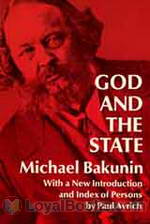 God and the State
God and the State
Bakunin’s most famous work, published in various lengths, this version is the most complete form of the work published hitherto. Originally titled “Dieu et l’état”, Bakunin intended it to be part of the second portion to a larger work named “The Knouto-Germanic Empire and the Social Revolution” (Knouto-Germanic Empire is in reference to a treaty betwixt Russia and Germany at the time), but the work was never completed. (from book introduction) | |
By: Mildred Duff (1860-1932) | |
|---|---|
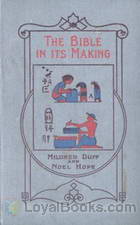 The Bible in Its Making - The Most Wonderful Book in the World
The Bible in Its Making - The Most Wonderful Book in the World
One great universal law runs through the realm of nature. Our Saviour gave it in a sentence: 'First the blade, then the ear, after that the full corn in the ear.' It is with the desire to show that the same law rules in another of God's creations — The Bible — that this little volume has been prepared. The Bible has as literally 'grown' as has an oak tree; and probably there is no more likeness between the Bible as we know it to-day and its earliest beginning, than we find between the mighty tree, and the acorn from which it sprang... | |
By: Mildred Maddocks | |
|---|---|
 The Consumer Viewpoint
The Consumer Viewpoint
| |
By: Milo M. Hastings (1884-1957) | |
|---|---|
 The Dollar Hen
The Dollar Hen
| |
By: Mírzá Abu’l-Fadl Gulpáygání (1844-1914) | |
|---|---|
 The Brilliant Proof (Burhäne Lämé) in reply to an attack upon the Bahai Revelation by Peter Z. Easton
The Brilliant Proof (Burhäne Lämé) in reply to an attack upon the Bahai Revelation by Peter Z. Easton
“In these days,” writes the renowned Bahá’í scholar, Mírzá Abu’l-Fadl, “which are the latter days of 1911, A. D. and the early days of 1330 A. H., I have seen a curious article which astonished me. What did I see? I find that one of the missionaries of the Protestant sect, who accounts himself among the learned men of the twentieth century, a helper of the pure religion of Christ and one of the civilized and cultured occidentals, by name, Peter Z. Easton, has been so provoked by jealousy... | |
By: Mohandas Karamchand Gandhi | |
|---|---|
 Third Class in Indian Railways
Third Class in Indian Railways
Mohandas Karamchand Gandhi (1869 – 1948) was the pre-eminent political and spiritual leader of India during the Indian independence movement. He was the pioneer of satyagraha — resistance to tyranny through mass civil disobedience. This philosophy was firmly founded upon ahimsa, or total nonviolence, and led India to independence and inspired movements for civil rights and freedom across the world. Gandhi is commonly known around the world as Mahatma Gandhi and in India also as Bapu. He is officially honoured in India as the Father of the Nation; his birthday, 2 October, is commemorated there as Gandhi Jayanti, a national holiday. | |
 Guide to Health
Guide to Health
Mahatma Gandhi, known today as a fascinating political leader and pacifist, also considered himself "something of an authority on matters of Health and Disease as well. Very few of us perhaps are aware that he is the author of quite an original little Health-book in Gujarati. [...] His views are of course radically different from the ordinary views that find expression in the pages of such books; in many cases, indeed, his doctrines must be pronounced revolutionary, and will doubtless be regarded by a certain class of readers as wholly impracticable... | |
By: Moncure D. Conway (1832-1907) | |
|---|---|
 Autobiography Memories and Experiences, Volume 1
Autobiography Memories and Experiences, Volume 1
Moncure Daniel Conway was an American abolitionist, Unitarian, clergyman and author. This first volume of his autobiography covers roughly the years of his birth through the end of the US Civil War. | |
By: Moncure Daniel Conway (1832-1907) | |
|---|---|
 Autobiography Memories and Experiences, Volume 2
Autobiography Memories and Experiences, Volume 2
Moncure Daniel Conway was an American abolitionist, Unitarian, clergyman and author. This second volume of his autobiography covers the years from the US Civil War to roughly 1904. | |
By: Mr. (John) Oldmixon (1673-1742) | |
|---|---|
 Reflections on Dr. Swift's Letter to Harley (1712) and The British Academy (1712)
Reflections on Dr. Swift's Letter to Harley (1712) and The British Academy (1712)
| |
By: Mrs. (Jean Oliver) Mill | |
|---|---|
 Reform Cookery Book (4th edition) Up-To-Date Health Cookery for the Twentieth Century.
Reform Cookery Book (4th edition) Up-To-Date Health Cookery for the Twentieth Century.
| |
By: Mrs. Bowdich | |
|---|---|
 New Vegetarian Dishes
New Vegetarian Dishes
| |
By: Mrs. Cecil Hall | |
|---|---|
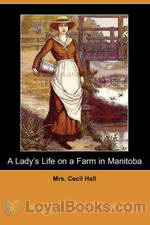 A Lady's Life on a Farm in Manitoba
A Lady's Life on a Farm in Manitoba
The nineteenth century was marked by intense colonization by countries like Britain, France, Portugal, Spain and the Netherlands. Initially, the pioneering efforts were made by men who battled unfamiliar terrain to create territories that they marked out as their own, while their wives, mothers, sisters and daughters kept the home and hearth in their native land. However, with travel becoming more common and family life assuming more importance, the women too began to travel to the four corners of the earth... | |
By: Mrs. E. E. Kellogg | |
|---|---|
 Science in the Kitchen.
Science in the Kitchen.
| |
By: Mrs. Eugenia Dunlap Potts (1840-1912) | |
|---|---|
 Historic Papers on the Causes of the Civil War
Historic Papers on the Causes of the Civil War
While claiming to be historical papers on the causes of the United States Civil War, the author indulges in some Slavery Apologetics. An interesting view from a southern lady on what caused the war and why the south was the underdog. | |
By: Mrs. Humphry | |
|---|---|
 Manners for Men
Manners for Men
Many men who go out into the world while still very young to earn their living have few opportunities of acquiring a knowledge of social observances. Should this little manual of manners be of use to any such in enabling them to master the theory, as it were, of social customs in the educated classes, it will have attained its aim. | |
By: Mrs. Isabella Beeton (1836-1865) | |
|---|---|
 The Book of Household Management
The Book of Household Management
“Mrs. Beeton’s” is a guide to all aspects of running a household in Victorian Britain. Published in 1861, it was an immediate bestseller, running to millions of copies within just a few years. In the cookery sections, Mrs. Beeton follows the animal “from his birth to his appearance on the table.” Learn how to care for poultry during moulting season, how to wean calves, how to cure hams, salt cod, carve mutton, and much more. | |
By: Myrtle Reed (1874-1911) | |
|---|---|
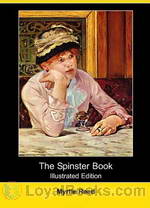 The Spinster Book
The Spinster Book
A cross between guidebook and social commentary, The Spinster Book gives clever and humorous insights on topics such as courting, handling men and women, love letters, marriage and spinsterhood. | |
By: N. A. (Napoléon-Antoine) Belcourt (1860-1932) | |
|---|---|
 Bilingualism Address delivered before the Quebec Canadian Club, at Quebec, Tuesday, March 28th, 1916
Bilingualism Address delivered before the Quebec Canadian Club, at Quebec, Tuesday, March 28th, 1916
| |
By: N. E. Dionne (1848-1917) | |
|---|---|
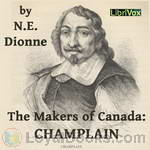 The Makers of Canada: Champlain
The Makers of Canada: Champlain
A biography of Samuel de Champlain, French explorer, founder of Quebec, and father of New France. ( | |
By: Nagarjuna | |
|---|---|
 She-rab Dong-bu (The Tree of Wisdom)
She-rab Dong-bu (The Tree of Wisdom)
The She-rab Dong-bu (Tree of Wisdom) is a metrical translation in Tibetan of a Sanscrit ethical work entitled Prajnya Danda, written by Nagarjuna who flourished in the fourth century of the Buddhist era (about 100 B.C.), The Tibetan version was probably made about the 11th century of our era but the exact date has not been determined. It is included in the Ten-gyur, ངོ་ section, volume གོ་, beginning at leaf 165. The Tibetan translator describes it as the second volume but I cannot say whether the remainder of the work has been preserved in Tibetan – the Sanscrit original is apparently lost. | |
By: Nathaniel C. Fowler, Jr. (1858-1918) | |
|---|---|
 1000 Things Worth Knowing
1000 Things Worth Knowing
Part almanac, part encyclopedia, part dictionary, Nathaniel C. Fowler, Jr. gives us his idea of important, but sometimes obscure, facts that he thinks should be in our bank of general knowledge. He includes a large section on medical emergency and health. Items are arranged in alphabetical order, so there is no logical presentation, but reference is made easy. Or, it is just interesting browsing, and a glimpse into the world of the early twentieth century. - Summary by Larry Wilson | |
By: Nathaniel Hawthorne (1804-1864) | |
|---|---|
 Our Old Home
Our Old Home
These essays, based on Hawthorne’s stay in England from 1853 to 1857 as American Consul in Liverpool, were first published in the form of a series of travel articles for The Atlantic Monthly.In these writings, he displays his humor, his empathetic nature, his pride in his country, and sometimes his sharp judgment of others. He shares with us the difficulties of being a consul in the 1850’s, takes us on a tour with him through rural England and Scotland, shows us the splendors of London, and the horrors of the poverty that so many suffered. (Introduction by Margaret) | |
By: Nathaniel Hillyer Egleston (1822-1912) | |
|---|---|
 Arbor Day Leaves A Complete Programme For Arbor Day Observance, Including Readings, Recitations, Music, and General Information
Arbor Day Leaves A Complete Programme For Arbor Day Observance, Including Readings, Recitations, Music, and General Information
| |
By: Nathaniel Sands | |
|---|---|
 The Philosophy of Teaching The Teacher, The Pupil, The School
The Philosophy of Teaching The Teacher, The Pupil, The School
| |
By: Nathaniel Southgate Shaler (1841-1906) | |
|---|---|
 Domesticated Animals Their Relation to Man and to his Advancement in Civilization
Domesticated Animals Their Relation to Man and to his Advancement in Civilization
| |
By: National Gambling Impact Study Commission | |
|---|---|
 National Gambling Impact Study Commission Final Report
National Gambling Impact Study Commission Final Report
The National Gambling Impact Study Commission was given the task of conducting a comprehensive legal and factual study on the social and economic implications of gambling in the United States. This report presents the principal findings of that work and recommendations for action. | |
By: Naval War College (U.S.) | |
|---|---|
 Sound Military Decision
Sound Military Decision
| |
By: Nellie Bly (1864-1922) | |
|---|---|
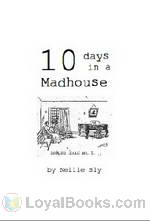 Ten Days in a Madhouse
Ten Days in a Madhouse
Long before Christiane Amanpour, Frances Fitzgerald and Martha Gellhorn blazed a trail in courageous investigative journalism, a pioneering and intrepid writer and journalist whose pen name was Nellie Bly opened up a whole new field in what had previously been a strictly male domain. Ten Days in a Madhouse was published as a series of articles in the New York World during 1887. Nellie Bly was given the assignment by her editor to have herself committed to an insane asylum in New York with a “view to writing a plain and unvarnished narrative of the treatment of patients therein and the methods of management... | |
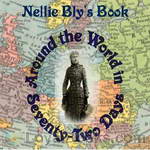 Around the World in Seventy-Two Days
Around the World in Seventy-Two Days
This is a true account by American woman journalist who, in 1889, set out to see whether she could beat the fictional journey in Jules Verne’s 1873 novel, Around the World in Eighty Days. Wearing one dress and carrying one handbag, Elizabeth Cochrane Seaman (pen name “Nellie Bly”), reported her travels back to avid readers in America. | |